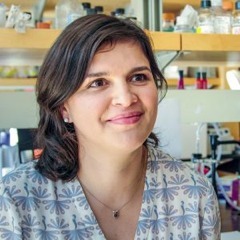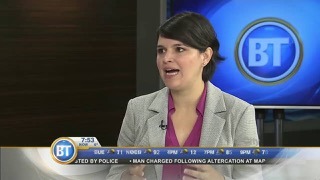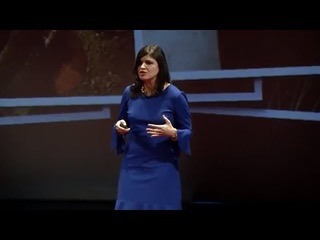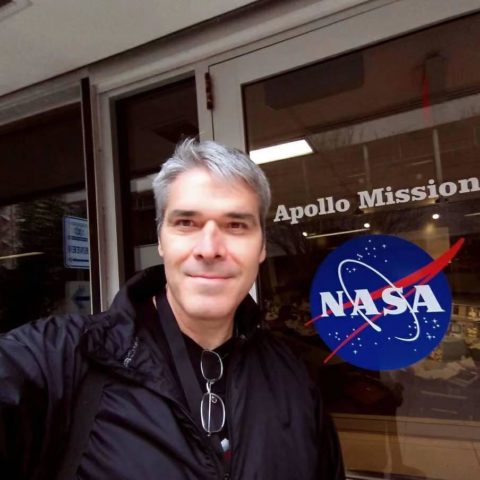In today’s blog I feature an excerpt from the upcoming book The Intrepids: Costa Rican Women in Science and Technology which I co-authored with Ana Luisa Monge Naranjo. The book showcases the fascinating and inspiring work of 18 female Costa Rican scientists and engineers and will be published early in 2021 by the Costa Rica Institute of Technology Press. In this excerpt, we meet Marie Claire Arrieta Méndez who was born in Tibás, San José. August 18, 1978. Since September 2016, she has been an assistant professor and group leader at the University of Calgary, Alberta School of Medicine.

“Begin to free yourself from the impostor syndrome, the one that questions our abilities and merits before ourselves.”
Gerty Theresa Cori (1896-1957) was the first woman in the world to win a Nobel Prize in Physiology or Medicine, for her participation in the discovery of the metabolism of glycogen in lactic acid, a process known as the Cori cycle. She used to say that the unforgettable moments in the life of a researcher are those rare ones, which come after years of heavy work, when “the veil over the secret of nature suddenly lifts, and what was dark and chaotic appears with a light and a pattern clear and beautiful.”
Marie Claire Arrieta Méndez, a passionate researcher, knows these glorious moments very well after periods of waiting and frustrations. She was part of the research team that discovered the relationship between intestinal microorganisms and pediatric asthma, which has opened lines of prevention and treatment in that field. Marie Claire’s academic journey began at Saint Joseph’s School and Saint Claire School, institutions located in Moravia, San José. After graduating with a degree in Microbiology and Clinical Chemistry from the Universidad de Costa Rica (UCR), she obtained a Master’s degree in cell biology and a PhD in Medicine from the University of Alberta, Canada. She also completed a postdoctoral stay at the University of British Columbia, Canada. During her university days at the UCR she worked student scholarship hours and did her graduation project at the Center for Research in Cellular and Molecular Biology (1999-2001). After completing her master’s degree, she worked as an assistant in a research laboratory at the University of Alberta (2005-2007), where she later completed her PhD (2007-2011). She then worked as a postdoctoral scientist at the University of British Columbia (2011-2016). Since September 2016, she has been an assistant professor and group leader at the University of Calgary, Alberta School of Medicine, the city where she lives.

Among her awards is the 2017 Clodomiro Picado Twight National Science Award for research on the role of the early intestinal microbiota in the development of the immune system and in the pathogenesis of pediatric asthma.
In Canada she has received several awards:
- Peak Scholar Award, Universidad de Calgary (2018).
- New Investigator Award, SickKids Foundation and CIHR (2018).
- Calgary Top 40 Under 40, Avenue Magazine, Calgary (2017).
- President’s Doctoral Prize, University of Alberta (2010).
- President’s Doctoral Prize, University of Alberta (2009).
- Andrew Stewart Memorial Award, University of Alberta (2009).
Hobbies, dreams and aspirations
In addition to science, which I am passionate about every day, I dedicate my spare time to my family (husband and two children), to karate and to study French. I also really like historical novels. Among my dreams are to see my children grow and study, continue to lead research projects, train more young researchers, spread science more to the public, and hold positions of greater academic and scientific leadership. In the future I would like to get involved in science policy initiatives.
What she had to sacrifice or set aside to achieve her professional goals.
Leaving Costa Rica and living in another country, which has been both a sacrifice and a benefit, because living in Canada and doing what I do here is a great experience, despite the fact that it involves missing my family members and other people close to me. In general, scientific work represents many hours of work and study and, without a doubt, spare time is sacrificed. However, it becomes more bearable when you dedicate yourself to what you are truly passionate about.

Characters in science and technology considered as role models
Many of my mentors throughout my career: Dr. José Bonilla, Dr. José María Gutiérrez, Dr. Karen Madsen, Dr. Jon Meddings and Dr. Brett Finlay. I have learned a lot from everyone. I also admire two world-renowned microbiologists: Doctors Bonnie Bassler and Margaret McFall-Ngai.
Who were unconditionally by her side?
My family in Costa Rica, my family in Canada and very dear and close friends. Without them I would not be what I am nor would I enjoy what I do so much.
When and how did you realize that you wanted to study the field of microbiology, cell biology, and medicine? What was the inspiration for choosing your career?
I have liked science a lot since my childhood. I was interested in observing nature, conducting “experiments” at home, and reading. At school we were encouraged to be interested in research, since every year we had to do a research project that had a value of 5% for all subjects. Studying was not my favorite part of school, but I loved the research project. At first, I thought I was going to study medicine, but just before choosing a career, I imagined myself in a laboratory and I liked the idea. It was at university that I also learned that I had to take pleasure in studying and reading a lot, and I still want to continue learning.
Tell us an anecdote from your childhood or adolescence related to the decision to study microbiology, cell biology, and medicine.
I remember very well when my dad took me to do a blood test in a clinical laboratory. He knew the microbiologist, and seeing that was I asking him questions about blood, he invited me to see the cells under a microscope. I still remember the images very vividly: the cells tinged with pink, blue and purple, their different shapes and sizes. I spent a lot of time imagining what the cells did in the blood and how they “talked” to each other. It was no surprise to anyone when I decided to study microbiology.
What do you consider to have been the main achievements of your professional work and what are your aspirations for the future?
Having my own research group and its success is one of my greatest achievements. I am very proud to also give time and importance to communicate science to the general public. I have done this through many talks, articles, interviews, a book, a documentary and other plans on the way. In the book Let The Eat Dirt I have had the opportunity to convey an important scientific message to thousands of people in 14 different languages. This scope is something that I would not have imagined when I began my journey as a scientist. In the future I hope to continue training new scientists and improve my ability to take science to as many places as possible.
Do you consider that the contribution of women to the field of science and technology is different from that of men or not? If so, what would those differences be?
It is different, because there are fewer women in leadership positions in the sciences and there is a significant number of women scientists who do something other than science after their training. Although there have been important advances in terms of equality between men and women, thanks to the invaluable contribution of pioneering scientists, being a woman continues to represent an important barrier, since women are professionally disadvantaged after having children and, even without having them, they lose opportunities in leadership, awards, financing, among other recognitions.
What initiatives, public or private, would you recommend to encourage female participation in science and technology?
There are good initiatives that promote that many women choose STEM careers (science, technology, engineering and mathematics). In fact, many careers have half or more than half women in their classrooms. The problem, in my opinion, is not in encouraging more women to choose these careers, but rather manage to practice after studying, and when they do, they manage to overcome the barriers that limit professional advancement for them. The root of these barriers is merely social.

We continue to have a much higher burden for domestic reasons and for having children. Unless this changes, it will be difficult for such barriers to be reduced or removed. Such problems will take a long time to reduce, unless there are policies that directly limit them. Other countries are succeeding with initiatives of this type, for example, by extending maternity leave that must be shared between mother and father equally and by promoting specific career opportunities for women, especially in their first year after becoming mothers.

Books or sites that you recommend to young audiences
There are very good science sites accessible for free:
https://www.bbc.com/news/science_and_environment
https://www.nationalgeographic.com/
https://www.npr.org/sections/science/
https://www.quantamagazine.org/
https://www.smithsonianmag.com/
Gerty Theresa Cori was a great role model of strength in tough times: scarcity and malnutrition in World War I, emigration to the United States, lack of economic recognition for being a woman, the tension of World War II, but she never gave up and continued research next to her husband, the also eminent scientist Carl Cori.

Women like her opened the way for other scientists who, like Marie Claire Arrieta Méndez, enjoy those rare moments when “the veil over the secret of nature suddenly lifts, and what was dark and chaotic appears with a light and a pattern clear and beautiful. “

Bruce Callow is a Canadian teacher and co-author of the book To the Stars: Costa Rica in NASA. He does space education outreach work on behalf of NASA.

